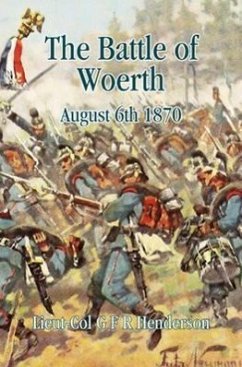This is a companion volume - and a much less well-known study - to the same author's classic, The Battle of Spicheren August 6th 1870, providing an account of the 'other' battle fought that day, at Woerth, in Alsace. The Battle of Woerth was, like Spicheren, an encounter battle during the opening phase of the Franco-Prussian War, and had the same result - after a courageous defense, the French were forced to withdraw from the field of battle. Although briefer than his study of Spicheren, Henderson nevertheless carefully selected his sources when researching this book, again including regimental histories. He presents a detailed narrative of the battle, with additional comments about the tactics employed, and the qualities (or otherwise) of the generals and the men they led. This new expanded edition not only includes all of the maps from the original, but also features a new introduction by Duncan Rogers, as well as added illustrations and a comprehensive bibliography of the Battle of Woerth.
Hinweis: Dieser Artikel kann nur an eine deutsche Lieferadresse ausgeliefert werden.
Hinweis: Dieser Artikel kann nur an eine deutsche Lieferadresse ausgeliefert werden.








